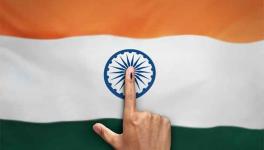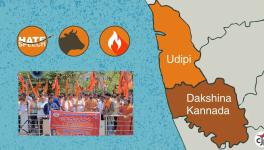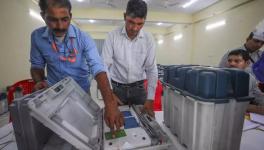Devil in Details of Online Campaigns for Assembly Elections
The Election Commission has banned roadshows and physical rallies until 22 January due to the surge in Covid-19 cases. Political parties have no choice but to switch to online campaigns for the forthcoming Assembly elections. Voters must prepare to 'meet' candidates only on Facebook, Google, WhatsApp, YouTube and other social media platforms, now the primary means to reach out to candidates and parties.
As we saw before, digital shift is easier talked about than implemented because internet penetration is low in many parts of poll-bound Uttarakhand, Uttar Pradesh, Punjab, Goa and Manipur. The deficiency is most evident in the higher reaches of the hilly state of Uttarakhand, where many villages have no internet access. In these areas, political parties have no option but door-to-door campaigns. Or the risk is leaving lakhs of people behind during these elections.
A new study by the Telecom Regulatory Authority of India (TRAI) has shown that even in Punjab, which is among the states with the highest teledensity, only 70% of people have accessed the internet on mobile phones. And, only around 60% of the population uses social media. The question is how to reach the 30% who live primarily in villages if in-person visits are prohibited.
Gaurav Pandhi, national coordinator of the Congress' digital outreach and in charge of the Punjab social media unit, says his party has appointed 400 social media "warriors", and another 500 are in training. He believes political workers will have to conduct door-to-door campaigns in rural Punjab to cover those who do not have internet access. Large screens, he says, will communicate the party's message in rural Punjab since actual rallies are off the menu.
The problem is not just preparation for a digital push or cash. Like in the real world, there is a mismatch in who already commands a following on social media. Few political leaders have used social media as extensively as Prime Minister Narendra Modi, and his party has a massive footprint on Facebook, Twitter, Instagram, even other lesser-known platforms. Smaller political parties are, therefore, entering this battle with a handicap. This led the Akali Dal (Badal) in Punjab and the Samajwadi Party in Uttar Pradesh to ask the Election Commission to ensure "a level playing field" in virtual rallies as smaller parties do not have the money or people to organise virtual rallies. The cost of an online event is no trifle—it can run into crores.
Political parties may have expected the ban on physical campaigns given the spread of the Omicron variant in urban and rural constituencies. Yet, that does not solve the lack of internet access, unreliable network services, or difficulty spreading rally schedules without person-to-person contact. For instance, in an online press conference, Congress party leader Priyanka Gandhi fielded Asha Singh, mother of a victim of rape in Unnao, and Poonam Pandey, an ASHA worker from Shahjahanpur who led an agitation for higher income for ASHA workers. Sadaf Jafar, an activist arrested and tortured for participating in the anti-CAA protests in Lucknow, has appealed for funds to contest the election on a Congress ticket recently. The question is, can such candidates hold their own against established caste networks and power-politics just because campaigns will be online?
Social media does not permit immediate contact between the candidate and voter, nor between political outfits and constituencies. Further, the enormous mismatch between the resources of the ruling Bharatiya Janata Party (BJP) is likely to grow during digital campaigns. An RTI application has revealed that Chief Minister Yogi Adityanath's government spent over Rs 160 crores on advertising in TV channels between April 2020 and March 2021. In a recent TV appearance, Samajwadi leader Akhilesh Yadav revealed that the supplementary budget allowed the Adityanath government much more for advertising during the Assembly campaign.
Another RTI had revealed that Prime Minister Narendra Modi's government spent over Rs 3,600 crore between April 2014 and October 2017 on promotions over Doordarshan channels, All India Radio, internet-based digital cinema and community radio stations. Rs 3,804 crores were spent between 2017-19 on advertising, according to a Ministry of Information and Broadcasting response to a query raised in Parliament by Ashok Mahadeorao Nete, a BJP Member of Parliament.
In other words, the social media departments of all political parties may have gone into overdrive, but it is the party with the most cash that can produce the most digital content and push it to the highest number of viewers. In Punjab, the Congress has a social media "war room" since October. It has floated 10,000 WhatsApp groups and another 15,000 groups are on the cards.
Even AAP has a robust presence on social media in Punjab and has held several webinars addressed by Delhi Chief Minister and AAP convenor Arvind Kejriwal and AAP legislator from Delhi, Raghav Chadha. In Uttar Pradesh, the BJP has trained 8,000 workers as social media "warriors" and according to party spokesperson Charu Pragya, it has workers spreading its message in every district. Rival leaders say they, too, are amping up their digital outreach, but there are problems. According to Sujata Paul, a Congress politician from Uttarakhand, her party has "done very well on the social media front", and most leaders have a website. But it has not kick-started virtual rallies yet, "since they are an expensive proposition".
Congress social media head Rohan Gupta has recently told the media that his party is set to broadcast virtual rallies on various platforms, including Facebook, Twitter, Instagram and Youtube. Tilting the balance in this scenario is the previously advantageous position of ruling or established parties, even if the programmes of new entrants, opposition parties, or independent candidates are better.
Surya Kant, a Dehradun-based technocrat, has his hands full designing and planning campaigns for the political class. Says he, "My team has been asked to create websites and to market these candidates to their target groups digitally. A candidate can launch a campaign for as little as Rs 5,000 per month. Others can spend up to Rs 1 lakh a month," he claims.
But the problem nobody is talking about is how social media platforms can manipulate and play favourites. It is a charge the Congress party has repeatedly levied against Facebook. Still, even whistleblowers have revealed that the social media giant chose to ignore hate speech and toxic content to rake in profits.
It is in this context that the Election Commission must ensure a level playing field for political parties, and it cannot forget independent candidates either. Leaders of all political parties must get equal opportunity to present their views via digital rallies, unlike the TV news, most of which has been skewed in favour of the ruling party for a long time.
The author is a freelance journalist. The views are personal.
Get the latest reports & analysis with people's perspective on Protests, movements & deep analytical videos, discussions of the current affairs in your Telegram app. Subscribe to NewsClick's Telegram channel & get Real-Time updates on stories, as they get published on our website.
























